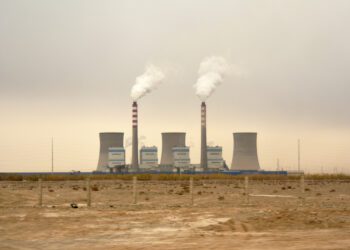As manufacturers accelerate plans to re-shore operations to the U.S., energy strategy has become one of the most material and multidimensional issues in the facility planning process. For energy-intensive industries, power procurement isn’t just a line item on the budget or a utility concern — it’s a strategic input with legal, financial, and operational implications.
This importance is amplified by today’s political and regulatory uncertainty. The Trump administration has already made significant changes to the energy landscape, and has signaled that more is to come. This could mean different priorities for decarbonization, incentives for renewables, or permitting rules for fossil fuel projects and transmission lines.
These shifting priorities directly affect how manufacturers evaluate energy options — especially when long-term investments are at stake. Manufacturers must take a more strategic and tailored approach to energy planning to ensure operational goals and cost structure for decades.
Features of Energy for Manufacturing
Manufacturers’ energy needs are different than many other types of commercial operations:
- Load Size: Manufacturing operations, in particular heavy manufacturing, often have relatively large loads. This opens additional supply avenues to manufacturers, and provides market leverage.
- Load Profile: Manufacturing operations have relatively consistent and predictable energy needs, particularly facilities that operate multiple shifts.
- Long horizons: Manufacturing facilities are long-lived assets. This allows manufacturers to make energy decisions over decades instead of months.
- Consistency and uptime: Energy interruptions mean costly facility downtime. For some manufacturers, energy interruptions mean damage to inventory or equipment, and protection against energy interruption is of paramount importance.
- Process Steam: Some manufacturing operations also require thermal energy, process steam, or similar non-electric energy inputs. Such requirements will substantially limit the available energy supply options. Here, we will focus on electric-only load requirements.
For manufacturers, energy supply is on par with labor availability and similar operational planning. In some sectors, energy considerations even outweigh traditional factors like real estate cost or proximity to suppliers. Energy should be an intentional operational opportunity to align with long-term cost, sustainability, and resilience goals.
Four Strategic Energy Goals
Manufacturers’ energy strategies balance some combination of four competing energy goals:
- Reducing total energy costs, particularly in price-sensitive or energy-intensive sectors.
- Price predictability, to support long-term financial planning.
- “Greening” the energy supply, for ESG or regulatory reasons. For some products and jurisdictions, a sufficiently green energy supply may also extend “green” benefits to the manufacturer’s products.
- Interruption protection, to avoid operational losses and liabilities.
No energy strategy can perfectly achieve all of these goals simultaneously, however. Choices and compromises must be made.
Energy Management Approaches
With competing energy goals in play, manufacturers should evaluate available management approaches which vary in complexity, commitment, and impact.
Renewable Energy Certificates (RECs). While technically not energy, RECs are a straightforward tool for achieving energy greening goals. The manufacturer buys energy from the grid (or any other source), and separately purchase RECs in the desired amounts. This allows the manufacturer to offset the emissions from purchased energy.
- Pros: Low cost; limited commitment; easy to execute; no physical facility required.
- Cons: Increases overall energy cost; does not contribute towards goals other than greening.
- Use case: Companies needing quick ESG reporting solutions or early-stage green targets.
Offsite Power Purchase (Virtual or Physical Delivery). With this approach, the manufacturer signs an agreement with the owner of a power plant not co-located with the manufacturing facility, and the remote power plant supplies energy to the manufacturing facility. This energy will reduce the amount of energy purchased from the local utility. These long-term financial contracts allow manufacturers to lock in their energy cost long-term.
Manufacturers planning new or expanded U.S. operations should take an informed, flexible, and jurisdiction-aware approach to energy. Navigating energy strategies involves considering long-term commitments, regulatory landscapes, and financial and operational considerations. With proper planning, manufacturers can align their energy strategies with broader business objectives, ensuring operational efficiency, cost-effectiveness, and sustainability in an unpredictable energy landscape.












